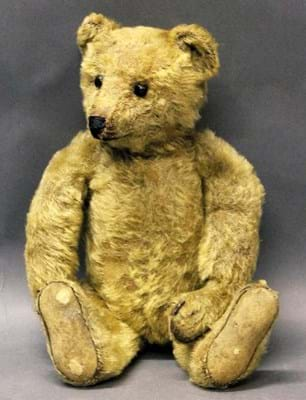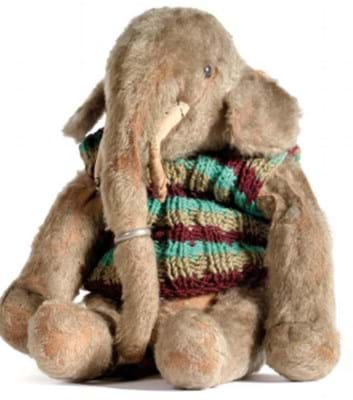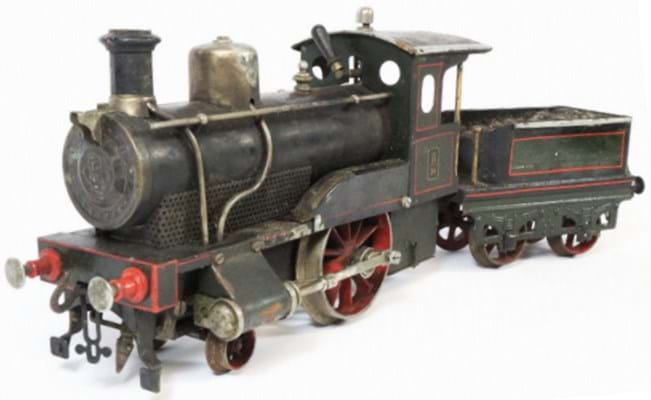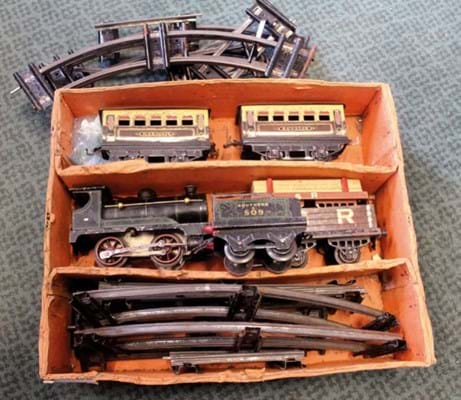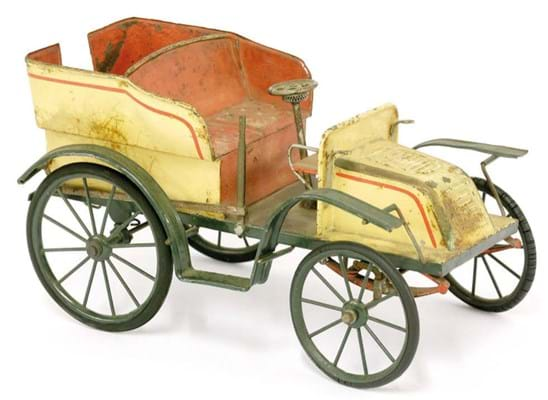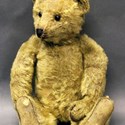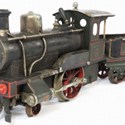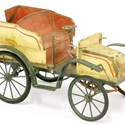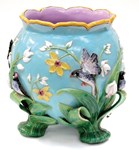Hammer highlights
Leading the way was a c.1910 tonneau car. Back then a tonneau meant a vehicle with a rear compartment and rear entry for passengers rather than the waterproof cover of modern usage. The 10½in (27cm) long car lacked its clockwork engine but sold to a collector at £900 against a £500-800 estimate.
The same collector went to a topestimate £500 for a c.1905-10, 9½in (24cm) long saloon complete not only with motor but also a chauffeur.
The third, a somewhat rusted, 10in (25.5cm) long, 1920s open-top doubledecker bus advertising Harry Lauder at the Tivoli, Pears Soap, Van Houtens Cocoa and Oxo, went to a Continental buyer at a mid-estimate £650.
Bing’s Nuremberg factory (1863-1933) was the biggest toy producer in the early 20th century and one of the first to produce toy locomotives which ran on tracks.
An example sold at Scarborough auction house David Duggleby (20% buyer’s premium) on February 11 was an early 1900s 2-2-0 steam loco powered by a spirit burner and water tank. Estimated at £150-200 and offered with 30 pieces of track, the 10½in (27cm) long toy made £650.
Going like clockwork
Hornby, established in 1901 to produce Meccano, did not start manufacturing clockwork trains until 1920. But by 1938, when the factory introduced the famous 00 gauge, it was already dominating the home market to an extent that inter-war models are a common sight at auction.
They still bring decent money, though, as shown when a boxed Hornby 0 gauge set of a Southern loco, tender carriages and a circular track was offered at Cockermouth auction house Mitchells (20% buyer’s premium) on February 18.
“I had a rather naive estimate of £20-£40 on it but we discovered it was a pre-war set, ” said auctioneer Ewan Duff. At £320 it was, he thought, still a good buy for the winning bidder.
Unlike other predominant pre-1914 German toy makers, no post-war makers really challenged the ranking of soft toy makers Steiff and particularly its iconic teddy bears.
An example at Mitchells, catalogued as probably 1910-20 and bearing signs of its age, was estimated at £400-600. It sold at £850 to a local buyer who was, said Evans, “very happy with the purchase”.
But while bears rule, the name has a trans-species magic – a Steiff fawn with the vital label and dated 1959-67 took a quadruple-estimate £130.
Naturally, as with bears, the earlier the better in the Steiff zoo. A 16in (41cm) mohair elephant offered at Tennants (18½% buyer’s premium) at Leyburn on February 11 bore all the marks of a much-loved toy.
The tusks had been damaged and badly patched and the body largely re-stitched. Stuffing and plush was missing in several areas.
“But it had the all-important Steiff trademark, the plain button for 1904-05 in its ear, ” said auctioneer Jane Tennant, who had estimated the elephant at £150-250 and sold it at £900.

